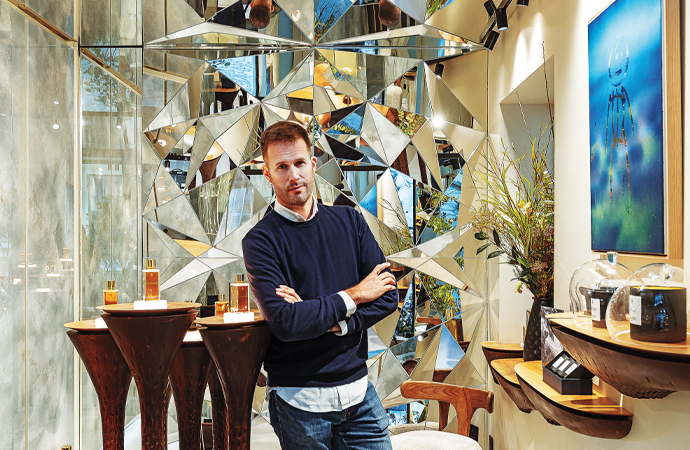How Calm Fosters Mental Health for Strong Leaders
C-level executives don’t have to suffer from anxiety and burnout
by Sahar Khan
May 15, 2024

Rhett Woods / Illustration: Joel Kimmel
We’re seeing a higher prevalence of stress, burnout, anxiety and depression among the executive, or C-level, group. Part of the challenge is that C-level executives don’t have many places to go for help. They don’t feel comfortable sharing, and they often don’t seek out the resources that might be available to them because they feel there’s a lack of time. And stigma can’t be understated. We’ve been making measurable progress in the mental-health space in the United States, but much of that progress has been fueled by the younger generations’ openness on social media. Our C-level executives, who tend to be in their 40s and 50s, are not there yet and don’t have these outlets.
As a society we’ve created the perception that leading comes from a position of pure strength and not showing weaknesses or vulnerability. Therefore, people bottle these feelings up. Believe it or not, C-level executives may not have as many friends as people think. There’s much more loneliness in these groups and there aren’t good peer support systems.
At Calm, we’re discussing mental health around leadership and development. We’re creating content and tools for C-level executives as well as managers. If you don’t have healthy leaders, you’re probably not going to have healthy overall interaction and a conflict-free company.
A handful of things are incredibly important for mental health, and it starts with sleep. The duration of sleep is an important aspect and what we need changes with our age. Another area is sleep consistency, going to bed and waking up near the same time. This is challenging for those of us who travel, but I’ve been doing this for about six months and the difference is amazing. Another point is getting your devices away from you in the final hour before you go to sleep. Getting outside and getting sunshine, in particular in the C-mornings, will help people work through their circadian rhythm. Lastly, it’s key to find social groups as an outlet. For example, many founders have formed groups that meet on a weekly or biweekly basis. It’s a social gathering but in a way it’s like their own self-organized group therapy. C-level executives, CEOs in particular, can be a little more open about mental health to help their workforce. In some cases, they can be more open about themselves. Microsoft’s Satya Nadella is a great example. He’s the CEO of one of the largest global tech companies and has been open about his journey with burnout and what he’s done about it. Executives don’t have to put it all out there, but they can at least acknowledge that stress and burnout hurts companies because it hurts people.
C-level executives have a real opportunity to help establish better boundaries. One of the things about our culture that is to our detriment is that we have this “always-on” mentality in the United States. C-level executives can set the tone and expectations around work hours and off-work hours.
The companies where Calm has seen the highest success rates are the ones where C-level executives are driving access to the tools. For example, we have Zoom and Microsoft Teams integration where companies can have a mindful moment, from 60 seconds to three minutes, before they start a big meeting. Calm is not just for people who have anxiety or depression. It’s for any of us to establish a mindfulness practice. It’s for any of us to be able to doze off at night. It’s about taking care of ourselves, and that tone can be set from the top.
Rhett Woods is the senior vice-president and general manager of Calm Health, the health-care division of Calm, which builds solutions to bridge the gap between mental and physical health care. Before joining Calm, Woods was chief creative officer at Rally Health, where his team helped take the company to 55 million users.




